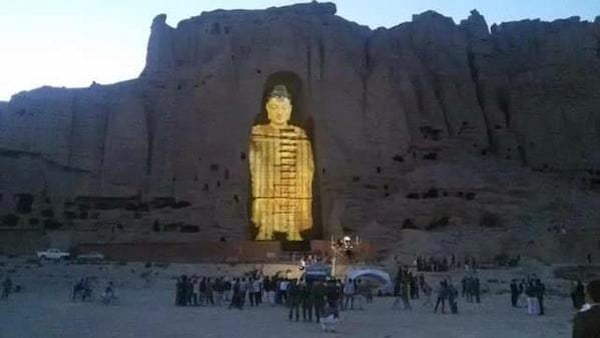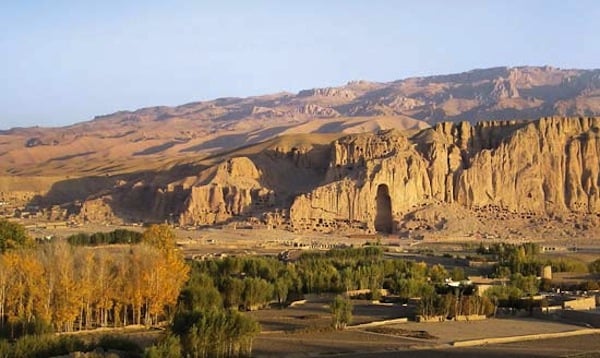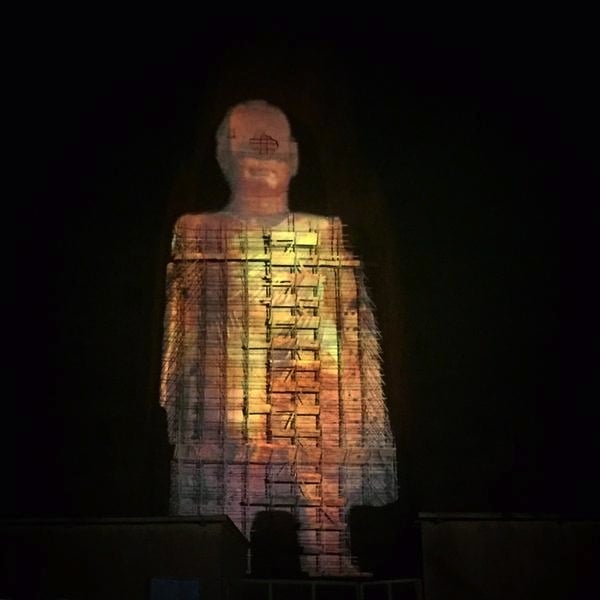Art World
See the Buddhas of Bamiyan, Destroyed by the Taliban, Resurrected as Holograms

Photo: @zheelaj via Twitter

Alyssa Buffenstein

The Buddhas of Bamiyan, two monumental 6th-century statues that were destroyed in 2001, were brought back to life last weekend via light projections, the Atlantic reports.
The statues, carved into a cliff in Bamyan Valley, central Afghanistan, were declared false idols by the Taliban, who forced workers to obliterate them using explosives in March 2001, leaving the huge niches full of rubble ever since.

A view of the cliff in Bamiyan Valley with an empty niche.
Photo via: Encyclopaedia Britannica
Much debate surrounded the question of reconstruction in the proceeding years. In 2003, UNESCO declared the ruins a site of World Heritage in Danger, but did not explicitly advocate for reconstruction, since the statues were too destroyed to allow for a complete rebuilding.
Some locals argued that reconstructions would attract tourists, but no agreement was reached (see Will Afghanistan Rebuild the Buddhas of Bamiyan?).
Two documentarians, Janson Yu and Liyan Hu, came up with a temporary solution in form of holograms. Their 3D projector cast life-size images of the Buddhas onto the sites where the monuments originally stood. The projections were not widely publicized, but over 150 people attended the event (see the video documentation below).
Even as recovery from this demolition begins, cultural heritage remains a target of destruction throughout the Middle East (see ISIS Destroying Iraq’s Cultural Heritage One Site at a Time).

This 6th-century statue was already in partial ruins before it was completely destroyed.
Photo: @alibomaye via Twitter
But, in Bamiyan, light projections are a fitting solution: “Bamiyan” has been translated from Persian as “the place of shining light.”